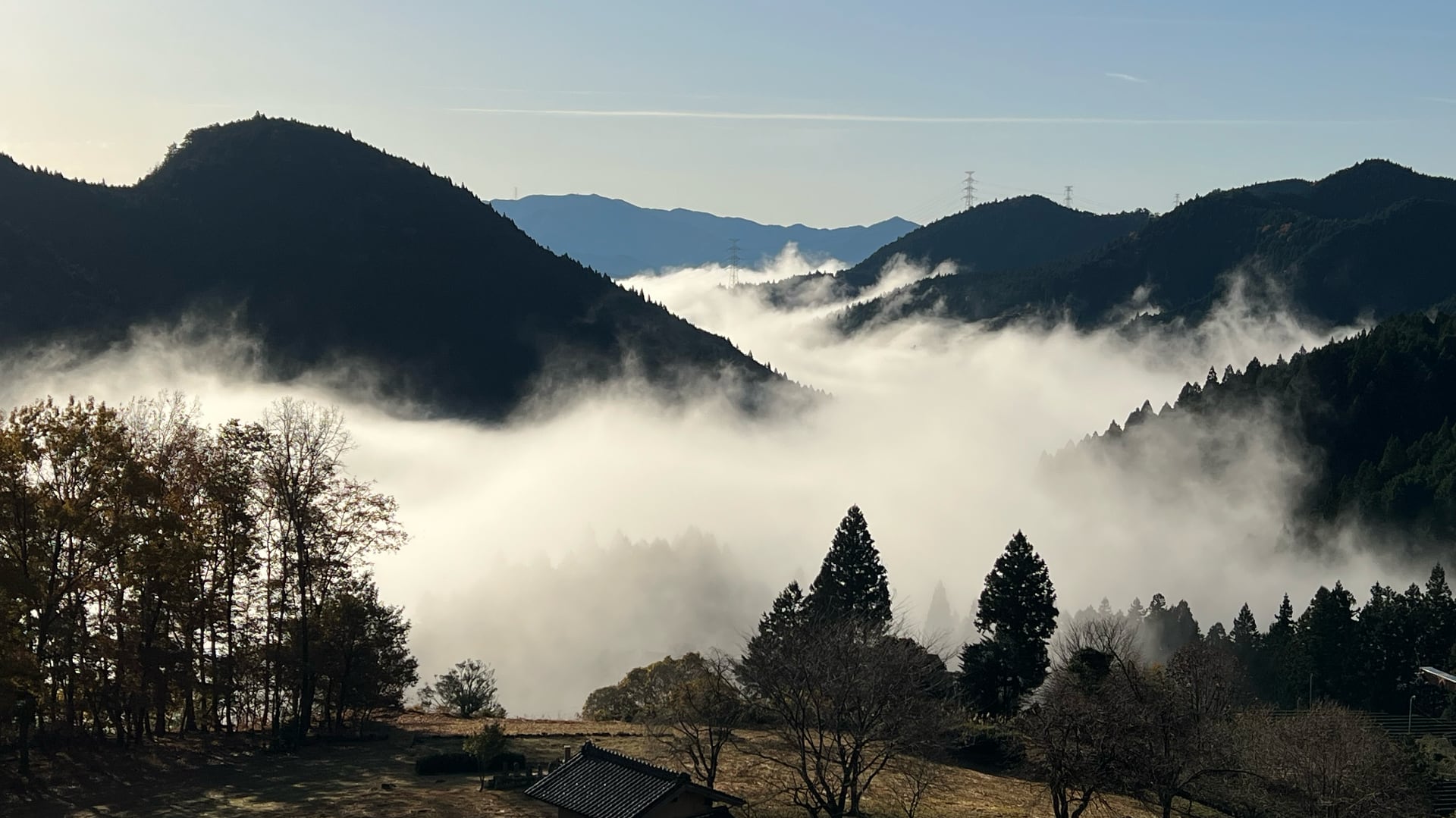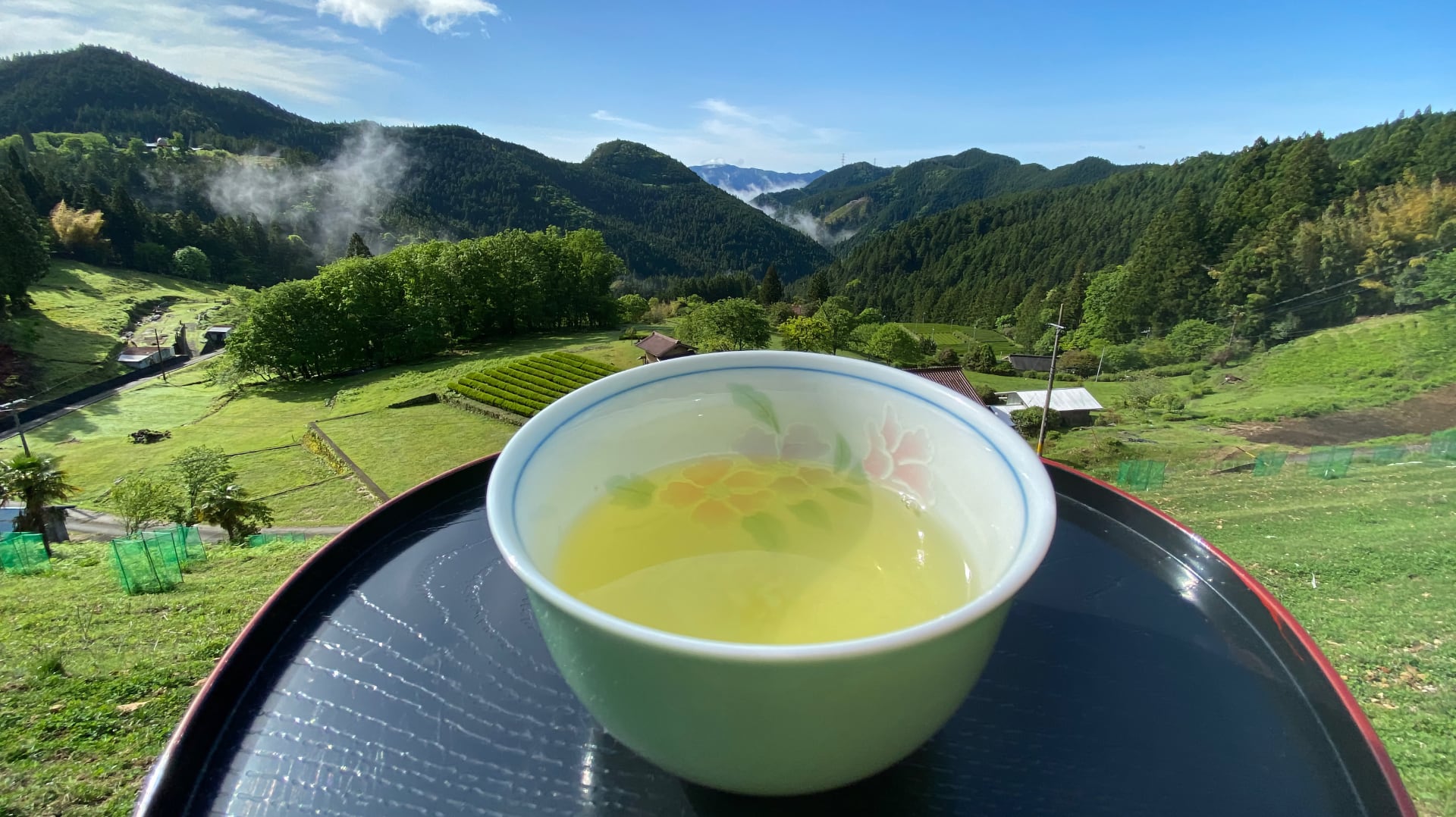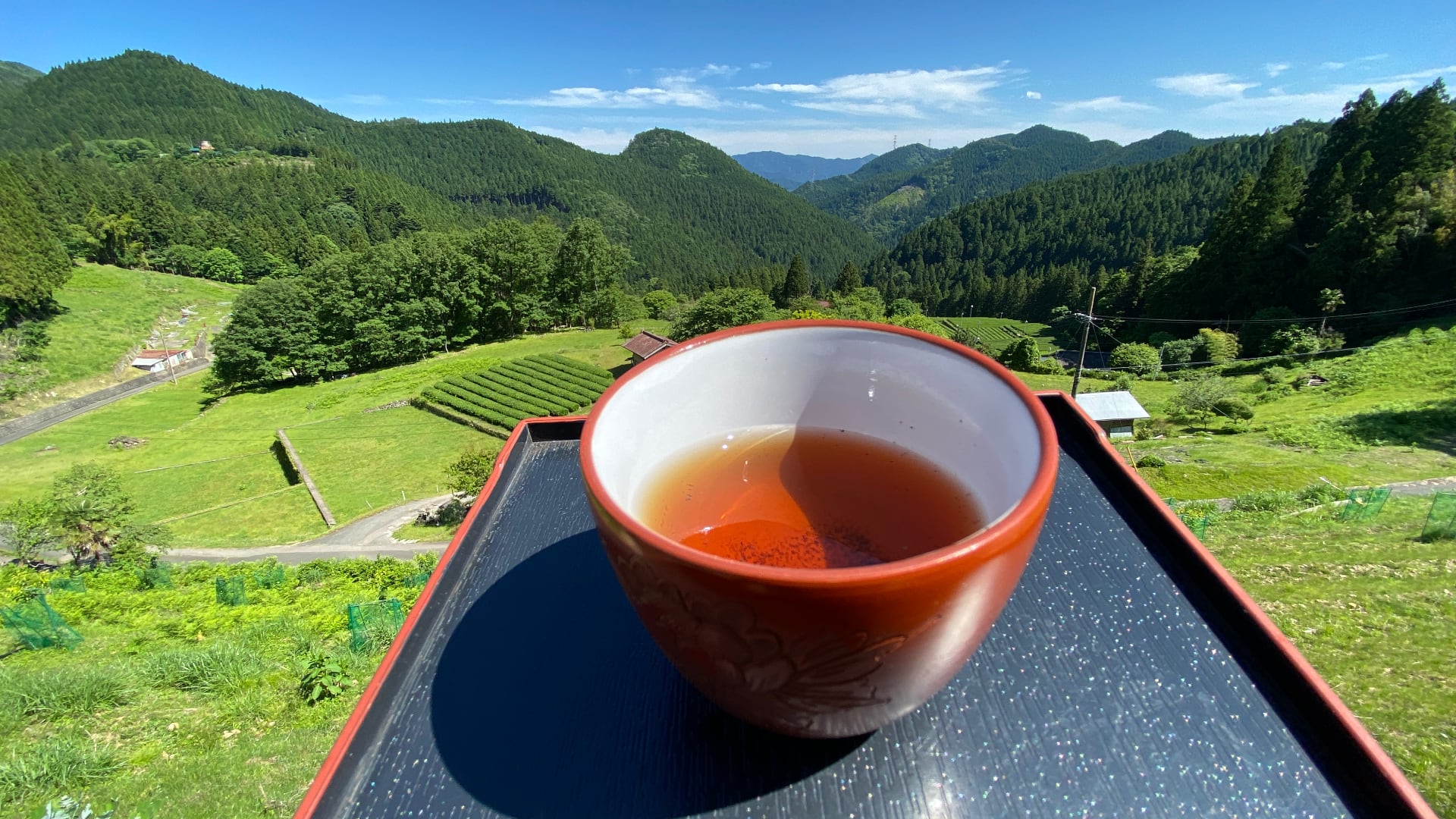April 2024 – Asamushi Sencha From Above The Clouds
This Unjōcha (雲上茶) is the follow up from last month's Unjōcha: it's a Sencha (煎茶) of style Asamushi (浅蒸し) from the very same producer, located in Kitashitara (北設楽郡) in Aichi (愛知県).

Photo courtesy of the producer
Asamushi Sencha: The Delicate Art of Light Steaming
Asamushi Sencha represents a traditional and gentle approach to preparing Japanese green tea, characterized by a shorter steaming process. Typically, this style involves steaming the freshly harvested tea leaves for only about 30 seconds. This light steaming technique is crucial as it preserves the natural color and delicate flavors of the leaves, resulting in a tea that is subtly sweet, with a clear, light color and a fresh, grassy aroma. Asamushi Sencha's refined flavor profile makes it highly appreciated among green tea connoisseurs who favor a more nuanced and less astringent taste.
The production process of Asamushi Sencha requires precision and careful timing to ensure that the leaves are not under or over-steamed. This fine balance helps maintain the integrity of the leaf's structure, contributing to a smoother infusion with less bitterness. The gentleness of this method makes Asamushi Sencha a perfect representation of the craftsmanship of tea makers in Kitashitara, Aichi, who are known for their dedication to high-quality tea production.

Photo courtesy of the producer
Comparing Sencha and Hōjicha
While both last month Hōjicha and this month Sencha come from the same producer, these teas offer distinctly different experiences due to their preparation methods and resultant flavor profiles. Sencha, especially in the Asamushi style, preserves its green color and imparts a grassy, slightly sweet flavor with a hint of astringency. In contrast, Hōjicha is made by roasting green tea leaves. This roasting process transforms the tea, both in color and taste, turning the leaves a reddish-brown and creating a beverage with a soothing, smoky-sweet aroma and flavor. Hōjicha contains less caffeine, making it an excellent choice for evening consumption or for those sensitive to caffeine.
When comparing these teas from the same producer, you get a unique opportunity to appreciate how different processing techniques can highlight various aspects of the same raw materials. Sencha showcases the pure, vibrant essence of the tea leaf, while Hōjicha offers a comforting warmth and depth. Each tea provides a distinct window into the traditions and innovations of Japanese tea-making

Sencha - Photo courtesy of the producer

Hōjicha - Photo courtesy of the producer
Brewing Unjō Sencha
The quantity of tea leaves should be adjusted based on the preferred taste; approximately 10 grams of Unjō Sencha is ideal for 200 ml (7 oz) of spring water. The steeping time should last about one minute in water heated to 85ºC (185ºF). The second and third steepings should be shorter than the first.
Enjoy!
